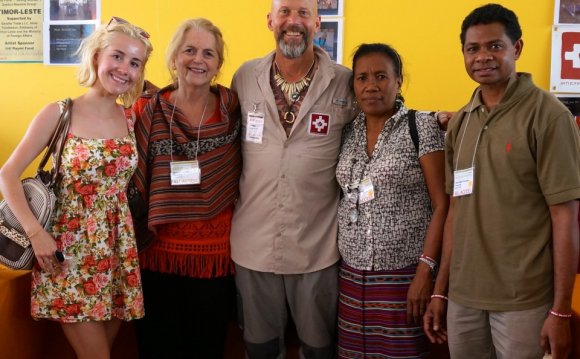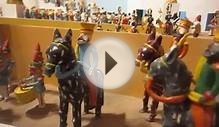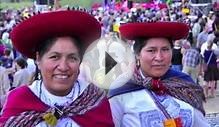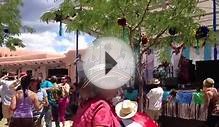
Inspired by a 2003 exhibit of folk art held at a local Santa Fe pottery store, the largely volunteer-driven International Art Market, now in its 11th year, has grown into the country’s largest folk art festival. Despite soaring Southwest summer temperatures (albeit with a dry heat), the Market now attracts upwards of 21, 000 attendees, which amounts to approximately 1/3 of the population of Santa Fe itself.
Participating artisans face stiff competition before they’re selected, so the works you’ll see here have been carefully vetted by curators and collectors for their quality and cultural significance.The Market generally gathers about 180 artists, from 60 countries, to sell their wares under tents atop the city’s Museum Hill, the site of many of Santa Fe’s cultural institutions. Many of these artisans, who hail from six continents and countries as disparate as Myanmar, Egypt, Macedonia, and the Dominican Republic, come from impoverished communities and are sponsored at the Market by non-profits or NGOs. Last year, total artist sales amounted to almost $3 million, 90% of which went home with the artists themselves.
The Market always kicks off with a Friday night party (for which a separate ticket is required), and, then is open for business for two full days thereafter. This friendly, cultural weekend, which includes stage performances and a tent full of international foods, celebrates altruism, a spirit of global community and a love of art.
Carvings, Ceramics, and Patchwork, Oh My!
Participating artisans face stiff competition before they’re selected, so the works you’ll see here have been carefully vetted by curators and collectors for their quality and cultural significance. One of the Market’s main objectives is not only to create sales opportunities for artists from other countries, but also to encourage the continued creation of handmade arts that are representative of that country’s identity.
The Market provides a unique opportunity to learn about vanishing crafts like woven tais cloth from Timor-Leste (formerly known as East Timor) and elaborate wooden marionettes that are carved and painted in Myanmar. Other works you’ll see here might include hand-knotted Moroccan carpets, Nigerian talking drums, Haitian voodoo tapestries, ornately carved gourds from Peru, embroidered clothing from the Ukraine and Afghanistan, and appliqué yak-leather bags from China.
Each artist generally has their own booth, and where a lack of English might be a barrier to communication, volunteer translators are on hand to help make introductions, answer questions and facilitate sales. If you fall in love with something enormous or unwieldy, there’s a shipping-service kiosk at the Market to help you get your booty home safe.
The crowds increase throughout the day, so if you’d like to shop with a bit more elbow room, invest in an early-bird ticket and gain access to the Market as early as 7:30 am on Saturday.
Passport to Culture
One of the big draws at the Market each year is the lineup of live music. Bands and performers from Cuba, South Africa, Madagascar, and more make appearances each year, as well as local acts from Santa Fe.
For its 11th anniversary in 2014, a couple of pre-Market concert events will take place under the banner of “Festival-au-Desert: Caravan for Peace”: on Wednesday, July 10, a touring festival of musicians in exile will take to the stage at the Lensic Performing Arts Center, a grand former movie palace; and on Thursday, July 11, a Nigerian band will join a trio of Market artists for a free show at The Railyard, half restaurant focusing on locally grown produce and half community arts center.
At the Market, a huge food bazaar introduces attendees to the foods eaten in several of the participating artists’ home countries. Most food booths here are run by local Santa Fe eateries, such as Jambo Cafe, Crepe Escape, and Annapurna Vegetarian.
Children are certainly welcome at these pre-events and at the Market, and if they’re 16 and under are admitted free on Saturday and Sunday. On Sunday during the Market, the Children’s Passport Program provides kids with a special passport that they’re encouraged to fill with flag stickers they collect from each artist booth.
The Bigger Picture
It’s not only artists that cash-in on this international action. Representatives from the State Department, as well as diplomats from Mexico, Japan, India, and more have made official appearances at the Market, happy to be associated with the financial success of a cultural enterprise model. The Market’s success has also attracted the attention of the Clinton Global Initiative , inspiring a commitment to expand to other cities, find new markets for artists’ work and a variety of training programs for folk artists, ranging from how to how to manage money and employees, to how to set up sales-portal websites and advertise themselves on social media.
YOU MIGHT ALSO LIKE












